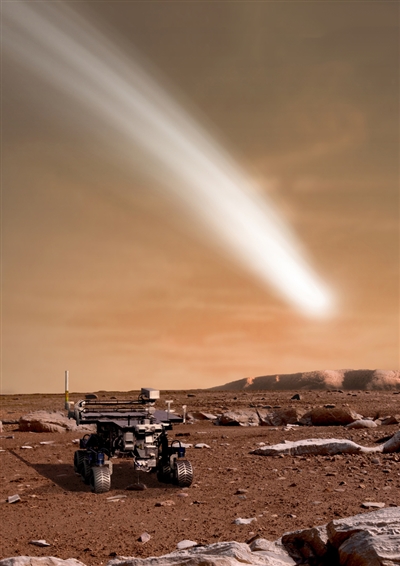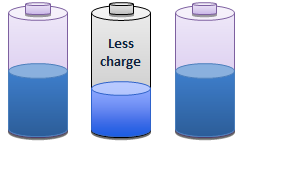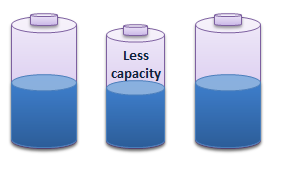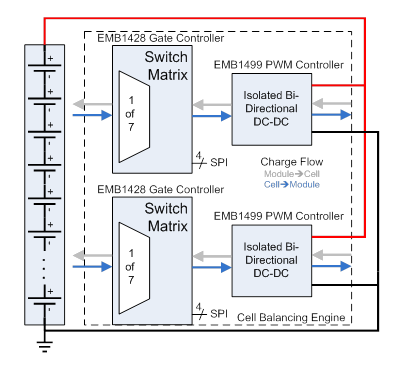SSZTBO6 January 2016 BQ76PL536A-Q1 , EMB1428Q , EMB1499Q

I recently went to see the movie “The Martian.” Being the engineer that I am and working for such a large engineering company, the story of Mark Watney's perilous journey above the deserted planet, really resonated with me and possibly with engineers alike. As I watched, the main character, Mark Watney, encounter one problem after another, I found myself wondering how I could have helped or if I would have done things differently. With one of Watney’s biggest problems related to his transportation across Mars, I knew I could help there.
Throughout the movie, Watney travels to various locations to find equipment from previous missions that would help him communicate better with NASA, as well as equipment that he would ultimately use to complete his most perilous journey yet: a 3,200km journey to the Ares 4 habitat. He rigs up a Mars rover using two rover batteries and 14 solar panels for charging.
Looking into the engineering Mark puts into the battery pack I started to wonder what TI could offer to aid Watney. As a product marketing engineer of the Battery Management Solutions (BMS) organization, I know the devices we build for electric vehicles (EVs) typically have battery packs with 90kWh capacities ranging in configurations of 96 series cells by 77 parallel cells. According to the novel, The Martian, the battery Watney uses is a mere 9kWh for one battery, and he only had two of them.
With TI’s battery management devices you are able to accurately measure each battery cell (voltage, current and temperature measurements) in large-scale battery packs. Such devices include the bq76PL455A-Q1 (16-channel battery monitor) and the bq76PL536A-Q1 (3S- to 6S-channel battery monitor). Both devices measure a smaller group of cells and have a certain degree of stackability to allow flexibility in scaling. By using an accurate, scalable monitor, you can increase your runtime by being power-efficient, and always know the full capacity of your battery pack.
With an electronic vehicle (EV) type battery system, the Mars rover would provide about four to five times the runtime to travel a couple of hundred kilometers, despite the heavier battery. A longer runtime would have reduced the number of times Watney had to stop during his journeys to recharge the rover’s batteries.
Active cell balancing is another technology that could benefit a Martian EV to manage the batteries properly. Temperature can have the largest impact on a cell’s performance by causing changes in the cell’s impedance. If an equal load is applied to all cells but some cells are at different temperatures, the cell materials will be subject to additional expansion and contraction. This all leads to very different aging characteristics. The result is a charge mismatch – and because the cells will age differently, soon there will be a capacity mismatch (Figure 1). If left unmanaged, the overall pack capacity becomes limited by the lowest cell voltage, leading to a reduced vehicle range.
Charge mismatch

Capacity mismatch
 Figure 1 Charge Mismatch vs. Capacity
Mismatch
Figure 1 Charge Mismatch vs. Capacity
MismatchThere are two basic types of cell balancing: passive balancing and active balancing. Here is a brief list of the basic features and benefits of each:
Passive Balancing:
- Simple to implement (hardware and software).
- Cost efficient.
- Reduces charge mismatch.
- Small balancing current (<1A).
Active Balancing (Figure 2):
- Energy-efficient.
- Reduces the effect of charge and capacity mismatch.
- Works in charge and discharge.
- Large balancing current (>1A).
- Can quickly balance large batteries.
- Increased usable capacity.
- Faster pack charge time.
- Higher heavy charge/discharge duty cycle-capable.
- Longer pack lifetime.
- Mix/match new/old modules.
- Can use mismatched cells within modules (increase production yield).
 Figure 2 TI Designs (TIDU239) EM1401EVM Simplified
Architecture
Figure 2 TI Designs (TIDU239) EM1401EVM Simplified
ArchitectureWhen choosing battery management solutions, active balancing would allow the most usable capacity from the batteries. All of the cells would be kept within millivolts of each other at all times, and Watney would always receive the most from the pack. The rover batteries, managed by TI’s EM1401EVM boards using the EMB1428Q and EMB1499Q active cell-balancing devices from TI, would provide high-performance 5A active cell balancing to get the most usable capacity from the batteries – for any journey across any planet.
Additional Resources:
- Learn more about the benefits of active and passive cell balancing in this blog: From millivolts to miles: How the performance of battery-management ICs affects your car’s performance